The Coming Russian Offensive 2023 Part 2
The Countdown Begins
i. Setting the Stage: Shaping the Battlefield
In Part 1 we covered the basics of Russia’s current force disposition in the SMO, which was that Russia’s current bayonet-strength ground force in Ukraine consists only of around 100-120k max manpower, contrary to bogus Western psyops (with LPR/DPR and various paramilitary/volunteer/PMC forces contributing an additional 50-70k). The remainder of newly mobilized forces are still training and awaiting the green light, in the rear and Belarus.
Now, before we get to the actual strategies of the Phase 2.0 offensive likely to kick off in a matter of weeks or less, we must first prep the stage by summarizing what both sides are currently doing to ‘shape the battlefield’ to their advantage, in preparation.
If you’re not familiar with the term, ‘shaping the battlefield’ is a military concept of doing preparatory work which optimizes your strengths while minimizing your weaknesses, and vice versa to your opponent. It can include conducting certain focused offensive activities in such a way as to influence the opponent into reacting and taking certain postures favorable to you, putting them into positions that will be unfavorable to them once the real operations kick off. In a sense, it’s the foundational groundwork, a way of herding your enemy into positions that will be conducive towards their eventual defeat.
Russia has begun a series of new offensives along a broad stretch of fronts, with the intention of attriting a now depleted and stretched-thin AFU force which—after an injection of fresh Russian mobiks and rotated troops—finds itself for the first time in numerical parity in many/most sections of the front. Before, the AFU held a quantitative advantage by outnumbering Russian forces (for instance the Svatove-Kremennaya line), but Russia held a qualitative advantage (in the superiority of their artillery fires, ISR, troop morale/training/command, etc.), and so the two nullified each other. But now, Russia has achieved rough numerical parity and the qualitative overmatch has tipped the scales in their favor, resulting in their advancing everyday in places like Svatove and recently in Zaporozhe.
It’s been recently called ‘death by a thousand cuts’. These are incremental advances on every front meant to bring AFU lines to the breaking point. The AFU cannot successfully reinforce all the fronts simultaneously and finds itself desperately sending forces back and forth to urgently plug gaps. From Bakhmut to Svatove, then Zaporozhe to Bakhmut, then Svatove to Ugledar, etc. This has resulted in the abandonment of many AFU positions toward secondary lines, and additionally acts as a ‘recon-in-force’ for Russian units to develop an operational picture of the strengths/weaknesses of AFU’s lines in a given theatre to then enact the main strike plans of the coming offensive.
Conversely, the AFU has reportedly been instructed by high command to “exhaust” the Russian army in order to buy time until the much-needed last ‘hail mary throw’ from the West in the form of new arms shipments (namely Leopard tanks and GLSDB’s) can arrive in the Spring. The command consists of an order to bitterly fight Russia for every square foot of every advance to grind them down and exhaust them, dulling the point of the spear, so to speak, for the coming offensive. This is, in effect, AFU’s last-ditch attempt at ‘shaping the battlefield’ in their own way, in order to create conditions as favorable to them as possible for the next big phase.
In light of this, it’s apparent that the Russian side is succeeding because they have successfully broken through the first defense lines in a number of key areas and forced the AFU into a tailspin of desperate shuffling of units, alluded to earlier. They have put the Ukrainian forces ‘on the backfoot’, retreating to hastily prepared secondary lines, creating disarray and priming them for exploitation by vanguard forces of the next offensive phase.
Of course, Ukraine would claim they are in fact succeeding in their goal of ‘exhausting’ the Russian forces, forcing them to fight for every square-inch of these recent broad-front advances, and only time will tell which side will be proven right.
ii. Rasputitsa and Launch Date
Now let’s briefly examine what experts on both sides are saying in anticipation of the offensive’s start date.
Firstly, from my explanation in Part 1 you know that the Russian mobiks (mobilized troops) of the final (late October) mobilization period were set to finish their training in late January/early February, creating the first open window for their utilization in a grand offensive only after such time. As of this writing the window has finally opened, and the big question on the air is: when will Russia begin?
We know that starting from late March and into April, the ground thaws into the dreaded, notorious ‘rasputitsa’, the period of impossibly muddy roads (‘General Mud’) known to favor defenders, making offensive maneuvering extremely difficult or nigh impossible. One web source states that in 1942, rasputitsa started on 3/21, in 1943 on 3/18, in 1944 on 3/17. So right around the official beginning of Spring. The period lasts upwards of 3-4 weeks, and the going theory is that the chances of Russia striking well before or well after this period are strongest and most logical, as launching an offensive directly in the middle of this period is unfavorable. Although it must be said, there are certain areas more and less susceptible to this, like the infamous bogs north of Kiev. So depending on Russia’s attack vectors, it may bypass the worst of the areas.
There’s been an increased clamor around the date of February 22-24, most recently with Ukrainian Defense Minister Oleksii Reznikov claiming it as the date for the new offensive.
Here, Alexei Danilov, Ukrainian National Security Secretary, also states that Russia will likely attack in the next 2-3 weeks, possibly on the exact Feb. 24 anniversary of last year’s attack.
It would seem that choosing late February would give Russia an uncomfortably short window before full-on rasputitsa. But Russia likely would not be counting on fully “winning” in the 4 week period from late Feb. to late March, but simply establishing enough of a foothold and crushing headway, which would be satisfactory enough. You’ll recall that Russia accomplished quite a lot in the same month-long period last year, conquering huge swaths of territory with a fraction of the manpower.
Sure, the AFU is positioned much more strongly today but Russia would also be bringing far greater force to bear. As long as they could make great strides, surround key regional capitals, like Kharkov for instance, they could be satisfied with then waiting out a period of rasputitsa. With that said, there are still some beliefs that Russia will hold off even longer, and launch the offensive later in Spring, but we’ll return to that later.
Logically speaking though, it does seem that anytime from now until late February would be the most favorable window, and thus holds the highest chance, and is my personal bet. Forecasts even predict a particularly strong chill falling soon, which will keep the ground much more consistently frozen.
And now, sources are indicating Russia is ready to pull the trigger within 10 days of this writing (2/6):
Not to mention new reports that there are “tens of thousands” of Russian troops accumulating north of Mariupol as we speak. Although one report slightly tempered this down to an increase from 10k to 30k troops.
Also, it’s being reported that Putin’s ‘State of the Nation’ address will be given to the Duma around February 20-21, right on the eve of the SMO anniversary. One can only recall his foreboding address last February when he first announced that Russian troops will be entering. This new address could herald the start of Phase 2.0.
iii. Forces In The Shadows
We’ve already beaten force dispositions to death, but let’s briefly mention it once more for a last important point before the main course.
I mentioned in Part 1 that Russia likely has in excess of at least 220k+ men on the sidelines (in Belarus and elsewhere) ready to enter the fray. However there are many indications that the number could even be extraordinarily higher. Several sources with reputable claims of being ‘in the know’ have stated that Russia has mobilized roughly an additional 200k on TOP of the announced 300k. Colonel Macgregor is one of them, professing that Russia has conducted a “stealth mobilization” which actually never ended at the officially appointed time in late October. Now, Ukrainian Defense Minister Oleksii Reznikov has been ringing alarm bells with his own version:
Note above where he specifically says there’s a declared 300k mobilized, but Ukrainian security services are counting 500k on their borders.
The problem in accounting for this is, if a ‘stealth mobilization’ did occur, it would be under the auspices of a major and unprecedented maskirovka campaign meant precisely to misdirect us. In fact, keen-eyed Western intel sources have already noted that for the past month Russia has been playing deceptive games with troop distributions and movements.
One report stated that U.S. intel/spy-sat sources watched a Russian train full of thousands of infantry ride from the center of Belarus all the way to a border area of Ukraine. The troops then disembarked and walked around before getting back on the train and shipping out again. The intel sources believe Russia is carrying out many such activities and maneuvers with the intention of throwing off and confusing Western surveillance, masking real deployments, etc.
On top of which, Russia has been carrying out a set of ongoing, month-long joint exercises with Belarus which, too, are deliberately designed to conceal mass migrations of military equipment and likely, when needed, the actual initiation of major operations. Military exercises have classically been used by every major country in this way: as the form de rigeur of employing obfuscation in the lead up to mass operations or invasions. If you’ll recall, Russia did exactly that back in Feb. 2022, using joint exercises with Belarus to smoke-screen the launch of the SMO. It’s easy to conceal armor movements under the guise of exercises.
Thus, we know for a fact Russia is currently employing what is likely an unprecedented campaign of maskirovka aimed precisely in misleading us of its true force potential and attack vectors, which makes it impossible to truly know, apart from conjecture, whether such a ‘stealth mobilization’ really did occur and where exactly troops are being concentrated. While Reznikov’s statements could be untrustworthy, he has no obvious reason to lie in this regard—apart from inflating Russia’s threat to milk more Western aid, perhaps. So, we will simulate the offensive from the scope of both possibilities—a hypothetical ‘stealth mobilized’ force, or the more realistic officially declared one.
iv. D-Day or Bagration 2.0?
So, how will it go down? Will hundreds of Russian strategic bombers swoop in and carpet bomb everything in a massive shock and awe campaign, with endless columns of Russian tanks blitzkrieging through Kiev, etc?
Not quite.
There are 3 main distinct operational possibilities for the big Phase 2.0 offensive that we’ll cover individually:
1. The Bold Crazy Ivan
The first is the most clamored after and ambitious: the “big arrow” push from Western Belarus into Volyn province to either capture, surround, or cut off Lvov, and thus isolate Ukraine from all Western aid coming in from Poland. There are several sub-variations, i.e. an ‘all out’ attack on Lvov from Belarus (with or without the help of the Belarus Armed Forces), or as part of a multi-pronged attack that also hits Kiev and elsewhere.
This option is by far the least likely, albeit most ‘spectacular’ and popular for arm-chair commandos and people not well-versed with war-time logistics and general strategy.
A. The primary reason this vector of attack is unlikely is logistical in nature. It splits the Russian forces into completely disconnected army groups at two ends of the country, upwards of 1200km away from each other. This puts a heavy strain not only on supply but also support logistics, forcing Russian aerospace support to split in a way where dual or multi-mission objectives would be impossible, and adding much longer, less efficient lead times on sorties that have to take off from much farther airfields, giving a big advantage to enemy forces, making calls for CAS less effective, etc.
It greatly and unnecessarily complicates the logistics, requiring massive parallelization of rear areas and command and supply infrastructure in the west of Belarus, which, critically, applies to airfields in particular, of which there aren’t as many (if any) suitable ones there. In general, it stretches supply lines from Russia proper by upwards of 500-700km and vastly stretches the coverage areas of AD systems, lessening the effectiveness of layered redundancy of systems in a more contained area. What I mean by this is, for instance, an S-300/400 placed equi-distantly between Kiev and Kharkov can cover BOTH fronts, allowing you to use half the units to do double duty (same goes for something like A-50 AWACs which might get dual coverage of mutually connected frontlines, but now would require separate disjointed systems to cover the West). But with 2 disparate frontlines at opposite ends of Europe’s largest country, you’d have to needlessly double up on AD and many other systems (EW, C2, Comms, etc, etc) on the western front for coverage of those forces. In short, it splits everything, rather than allowing a fluid, overlapping, interoperable theatre of operations where each element smoothly, directly and indirectly supports the other.
B. It needlessly and recklessly puts Russian forces in direct line of Western/NATO/U.S. recon, Sigint and ISR capabilities, which up to now have been limited or nullified entirely (with the exception of satellite surveillance). For those that don’t know, due to the basic science of ‘radar horizons’, NATO AWACS have a max range of ~400km, with maybe ~600km for large, high-flying targets like bombers. The AWACs that fly on the Polish border near Ukraine therefore can see about as far as Kiev, give or take—but not into Donbass and outlying regions, which are ~1,200km+ from the Polish border.
By opening an offensive on the western edge of Ukraine, Russia would be putting itself at an unneeded handicap in allowing NATO AWACs to dictate and shape the battlefield by closely monitoring and transmitting everything Russia does. All Russian air-assets—jets, cruise missiles, drones, et al, would be in full view of NATO radars and other systems(not to mention ground objects, armor, Russian radars/AD, etc., as well—as at that range, AWACs can use ‘look-down’ mode to even ID ground targets as well as radiation emissions of Russian AD radars, etc.), and Ukraine would have immediate access to this information, which would put Russian forces at exceptionally elevated risk. In short, the Russian forces would be completely “naked” in this region. Of course, at that proximity there would be increased opportunities for Russia’s powerful EW systems to jam and blind NATO’s assets as well, but it’s not a game worth playing when the AWACs are effectively unfairly shielded from any real reprisal as Russia can’t attack them in Polish airspace, as per the ‘unspoken rules’.
C. An attack along this axis is simply a wasteful and inefficient use of forces as the area is not even one Russia intends to occupy. A lot of fighting for what would ultimately result in the eventual withdrawal of Russian troops at the end of the war anyway. The region is highly inhospitable to Russians and would be particularly problematic from the standpoint of partisans, security, etc. It is far more likely here that partisan, guerilla, asymmetrical warfare—fueled by an endless flood of NATO mercenaries from right over the border next door—would asymmetrically grind down and wear away Russian forces with continuous raids, ambushes, traps, deceptions, etc. The civilians would transmit Russian positions 24/7, and it would generally be a pointless nightmare.
D. And lastly, such an excursion would cut Ukraine from Poland, but not from Moldova or Romania further south, which can become replacement hubs for AFU resupply anyway.
For reasons explained later, the other vectors of attack would accomplish the exact same objectives as Plan #1, but with more efficiency and less disadvantage and risk.
2. The ‘Macgregor Axis’
This is the favored axis of Colonel Douglas Macgregor, as espoused in several of his videos. And by the way, as brief sidenote, in order to contextualize his views—there are some people who understandably see Colonel Macgregor as just some random talking head, and don’t know that he was the de facto commander of the famous Battle of 73 Easting, which is considered the “6th largest tank battle in American history” and one, if not the, largest tank battles post-WW2 in the second half of the 20th century.
Macgregor has also been praised, as “one of the army’s leading thinkers on innovation” and for his near flawless combat and simulation record. As per wiki:
At a November 1993 exercise at the Army's National Training Center (NTC) at Fort Irwin, Lt. Col. Macgregor's unit vastly outperformed its peers against the "Opposition Force (OPFOR)". The series of five battles usually end in four losses and a draw for the visiting units; his unit won three, lost one, and drew one.[3] Macgregor's unit dispersed widely, took unconventional risks, and anticipated enemy movements.[3]
The point being, that what he says, the tactics he employs, recommends, or favors, should be noted, carefully considered and respected. Sure, I understand from the resistance sphere’s perspective, he’s an “American general” whose silly little ‘Iraqi tank battle’ wouldn’t hold a candle to Soviet valor of WW2, but insofar as American military experts go, he’s top of the field.
So—Macgregor favors the medium line. The strike down from Belarus towards Vinnytsia and Moldova, by way of Zhytomir:
This would in effect achieve the same result as the Lvov option, but:
A. Would be much nearer to the other eastern frontlines for better connectivity and reciprocity of forces and important logistical (and other) systems.
B. Would seal Ukraine off right at the pivot point of Transnistria/Pridnestrovia, allowing Russian forces to connect a land-bridge to their Pridnestrovian garrison, which has been increasingly threatened with provocations by western intel agencies operating in Moldova.
Quick note: you could technically accomplish this with the Lvov option too, BUT, it’s far more inefficient and improbable, as you would have to not only drive an impossibly long salient from Belarus down to Lvov region, but then hook eastward and drive it hundreds of kilometers towards Transnistria. This would create a thin salient stretching in the high hundreds of kilometers, whose supply lines would be completely untenable and unrealistic. This option is a much more direct route.
C. It allows Russian forces to be within striking distance of Odessa, opening the possibility of later capturing it. Odessa is one of the key, most important strategic objectives of the war for reasons explained soon.
Those are the pros. The cons are that, as mentioned with the Lvov idea, the supply lines would be stretched into an extremely susceptible salient over 400km long, which would be exposed to attacks from both east and west, highly vulnerable, AND would not allow air cover or CAS to operate as there’d be no way for Russian air assets (planes, attack choppers, and drones are much more critical than people think) to incur hundreds of kilometers deep into Ukrainian territory without getting shot down. Also, this area too would likely still be in range of NATO AWACs and other assets operating in Poland (and recently in Romania), putting all Russian forces and movements under increased risk.
But let’s take a quick detour to explain the significance of salients and how they work to better understand why some of these attack vectors are impractical. For those that don’t know, in military doctrine, particularly in the Soviet doctrines and warfare field manuals, there are preset guidelines for a variety of things, from the density of frontlines (how many fieldguns, infantry, etc., is ideal per square-kilometer of frontline, and things of that nature), to the minimum salient width necessary to secure your lines, FOBs, etc.
The way it generally works is, most artillery has a range of roughly 20-30km. So, if your salient is, let’s say, 40km wide, that means you can be out of reach of artillery from the east if your main HQ, FOB, C2/C3 area, MSR, etc., goes 35km from the eastern border of the salient. But then they would be a mere 5km from the western edge of the salient, putting them squarely in reach of artillery there.
So the solution is, your salient has to be a certain width, such that the center of it can be safe from most artillery so your command structures, supply dumps, etc., will be relatively protected. Of course, with the modern advent of guided HIMARs and such, with much longer ranges, this becomes a bit more moot. But those are still relatively low in number compared to the main artillery threat numbering in the hundreds/thousands. This means the salient must be, let’s say, 80km wide, so a padded ‘safe space’ exists in the center where artillery on both left and right flanks cannot reach. Now if you want to protect against HIMARS (90km range) your salient needs to be in excess of ~200km wide:
The problem is, an 80km or 200km salient drastically balloons the number of forces you need in order to clear and maintain/occupy such a vast stretch of land, particularly if it’s meant to stretch to such distances as from Belarus down to Transnistria (450km) or to Odessa (650km). Remember, the further you advance, the more forces must be left behind to occupy and defend each area you’ve conquered—so the longer your salient, the less troops you inevitably have to keep advancing forward. As can be seen in the above graphic, a 200km bridge would be enormous: 200km x 650km (distance to Odessa) is 130,000 square kilometers. That’s a massive amount of land equivalent to the size of England (130km2 exactly). Likely, such a stretch of land would take far more forces to occupy than what Russia would comfortably have to commit to such an offensive.
Can it be done? Sure, if the ‘stealth mobilization’ rumors prove true, and Russia has raised in excess of 500k+ total mobilized, on top of the 150-170k total current Allied troops fighting in theatre, then maybe it’s possible. 500,000 troops could theoretically take such a corridor, particularly given that Ukrainian resistance here would be stretched and vastly inferior in number and quality. But given the fact that I’m skeptical towards the ‘stealth mobilization’ narrative, I prefer to operate from the more realistic 220-260k figure, and that’s likely not quite enough to comfortably conquer a swath of territory the size of England.
3. The Golden Cauldron
This final vector is not only the most realistic, most probable, but also my personal choice as the most likely to be chosen.
This vector is the more traditional, safe route of Russian forces pushing up from Zaporozhe to cut Donbass from the south. Russian forces pushing down from Belgorod region into Kharkov, possibly from Kursk into Sumy and Bryansk into Chernihov.
The main aims here would be:
A. Retake everything that was lost in the AFU’s September AFU Kharkov counter-offensive. Then surround/siege/possibly capture Kharkov, but more notably, push deeper south toward Poltava and cut Donbass off from the north.
This includes retaking all of LPR, i.e. the areas east of the Oskil River, from the Svatove-Kremennaya line to Kupyansk, then down to Lyman and onward.
B. The southern push would likewise cut off the Donbass grouping from Zaporozhe and up toward Pavlograd and Dnipro. This would allow for the final, long awaited ‘Grand Cauldron’ to be closed over Donbass, trapping the entirety of the AFU grouping as the southern forces would aim to connect to the northern ones pushing through Poltava.
This has always been the aim of course, but Russia never had enough manpower to achieve it. They got as far south as Barvinkove, south of Izyum, but could never break through the main 1st echelon lines of AFU in the southern Donetsk corridor around Orikhov-Hulaipole.
So, why is this the most probable? There have been many clues, not least of which from Russian command and Putin himself:
1. Firstly and most significantly, the Russian Federation has signed the new territories of Donetsk and Lugansk into its constitution. This means they are legally bound by the highest force of law and obligation to recapture and secure these areas. They are of paramount priority. The same goes for Zaporozhe, which has been partially ratified and annexed, and of course Kherson too, though this is an exception because, while Russia controls 70-80% of Kherson Oblast, they don’t control the city, but there’s no comfortable way to get it yet, without wasting disproportionate effort in crossing the Dnieper River.
You might argue that Russia will still win these territories in due time, even if they choose the other method like the Lvov route. That’s true, but I’m emphasizing here the obligatory urgency that is inherent in the fact that these are now actual constitutional Russian lands. How would it look if Russia ignored its own lands being occupied, while it went on a year long (or more) adventure in west Ukraine, an area it doesn’t intend to ever occupy or annex? For the duration of that time actual, legal Russian citizens would be suffering under brutal Nazi occupation forces. This is a major problem and why I believe Russia will prioritize the liberation of these lands first rather than last as in the Lvov option.
You could also argue that with enough men Russia could do all three options at once, or perhaps two of them—for instance a push to cut off Lvov and the Donbass cauldron. But then, ask yourself, what would be the point of pushing Lvov if the Donbass cauldron alone would achieve the exact same objective of completely cutting off Western arms shipments to the main AFU grouping in Donbass?
Not only is there not enough manpower for both, but as stated above, the third option can achieve the same result and in an arguably better and more streamlined way if you pour all the forces there, rather than needlessly dissipating them all over the largest country in Europe, creating logistical nightmares in the process.
2. Putin himself has given us the biggest clue in an overlooked recent statement:
He said that it’s a ‘priority task’ for the Ministry of Defense to eliminate shelling of Russian border regions, namely Belgorod, Bryansk, etc., but this can be extrapolated to also include—in accordance with past statements—the increased focus on eliminating the terror threat to Donetsk, which too is now a constitutionally official Russian city.
One can clearly see then how the top priority of the forthcoming Russian offensive could and will likely revolve around finally freeing these de jure Russian regions from the terrorist threats that have monumentally escalated in recent months, particularly the barbaric shelling of Donetsk city which has of late become a nightly occurrence.
Recently more and more civilians have been displaced in the Belgorod and Bryansk regions of Russia as Ukraine increased shelling which has killed people and often destroyed power infrastructure, causing widespread outages in those rural regions. It’s Russia’s top priority to protect these people and regions. If Russia throws the bulk of its force somewhere west, to adventure through Lvov and Vinnytsia Oblasts, it would be viewed as a betrayal by the Russian people not only of those regions, but of Donetsk and elsewhere who have been suffering FAR too long to be asked to wait another year while the Russian army traipses around on the Polish border 1200km away. These people deserve to be liberated here and now. And I believe Putin and his staff see it this way as well, and will commit their primary forces to the task of solving this problem directly once and for all.
3. We’ve already mentioned how having a unified and uniform regional set of fronts would create far more effective redundancy and networking of overlapping systems, everything from radars and airforce, to Comms and C2/C3, and supply/logistics MSR’s, etc. In effect, it’s a far more streamlined approach.
4. This route is clearly the most efficient in terms of supply/logistics, as the main MSR’s would be coming directly from Russia in the shortest and most direct possible routes: in the south corridor, directly from Crimea and Rostov, and in the north directly from Belgorod. The Lvov and Vinnytsia option requires vastly stretched supply lines that first go from Russia to Belarus, then down into Ukraine.
How about the cons of this route? The biggest disadvantage is this route privileges Donbass and ignores Odessa. Odessa is arguably the single most critical objective in this entire war. For those that don’t know, the UK has long been eyeing Odessa as a future NATO base which would aim to neutralize Russia in the Black Sea. In fact the U.S. and UK both have already invested billions in building up naval infrastructure in that area, one Russia destroyed in the opening of the SMO. Here’s a good article on their plans: https://www.stalkerzone.org/the-us-and-uk-have-started-building-nato-naval-bases-in-ukraine/
British Special Forces were confirmed long ago to be operating in Odessa, particularly in training AFU in the usage of Harpoon, Neptune, and British anti-ship versions of the Brimstone missile.
Beyond that, Odessa is critical for national security for two big reasons:
1. Taking it would completely landlock Ukraine, disallowing any future naval/maritime involvement and provocations with NATO. Though this is under the assumption that neighboring Nikolayev is also subsequently taken.
2. It would connect an all important Russian landbridge to Russia’s own Transnistrian garrison. There have many provocations there, and Moldova has recently been tapped by Lavrov and many experts as the ‘next’ Ukraine. It’s become clear that after the Ukrainian SMO is finished, Moldova (as well as some of the Baltic states) will be chosen by the scriptwriters in NATO as the next epicenter of confrontation. These small states are quite susceptible to being coerced and puppeteered, as their feckless leaders (Maia Sandu in Moldova being a particular example) are easy to bribe, blackmail, and threaten into provoking Russia.
If you recall earlier in the war, Ukrainian authorities were virtually begging Moldova to invade Transnistria and push the Russian garrison out. Presidential advisor Podolyak also echoed these sentiments. During the siege of Mariupol and Azovstal, they even suggested to jointly invade Transnistria with Moldova in order to capture the Russian garrison, as it numbered in the similar ~2000-3000 range as the Azovstal POW’s, so that they could then use these Russian troops to exchange for their own Azovstal POW’s.
At the time, Russia clandestinely beefed up its garrison as well as it could:
But the threat of a major provocation remains from the Moldova direction. Thus it’s absolutely critical for Russia to control that corridor as soon as possible and connect their forces to Transnistria to allow resupply of the garrison. Macgregor’s Option 2 would be quickest in getting there. Option 3 would likely leave this sensitive region for last, which is the main detriment and risk of this option. However, it is likely a risk outweighed by the rewards of capturing the entirety of the Donbass and destroying the AFU’s main force.
v. Stealth Offensives and Ghost Brigades
There’s one other possibility which would apply to Option 3. That is, the slow-rolled or ‘stealth offensive’.
When most people imagine the coming Phase 2.0 operation they understandably think of D-Day or another February 24, 2022 style heavily announced, obvious mass incursion. But recently there’s been a gradual uptick of Russian pushes on every front that some believe may in fact already herald the beginnings of Phase 2.0 proper. This AFU soldier believes it has already kicked off.
There are advantages to starting off the new offensive with a subtle, gradual creep in this way. The biggest being it reduces the risk of centralization, where overtly declared forces of massed troops march in very visible, trackable, predictable deployments akin to the infamous ‘40 mile convoy’ of yesteryear outside of Kiev. The NATO overseers who control the AFU are now unprecedentedly plugged in and synchronized with Ukrainian command, committing unseen levels of surveillance infrastructure, the vast bulk of NATO’s signal/intel gathering capabilities, to analyzing and transmitting every visible inch of the Russian army’s movements.
To launch a more stealthy, ‘undeclared’ offensive, one along every possible axis, utilizing ghost brigades of smaller forces that wear down the AFU with the ‘thousand cuts’ method, could be a strong way to mitigate NATO’s spysat and SIGINT advantages. That’s to say we may not even see one obvious “grand rush” like Feb. 24, 2022, hundreds of helicopters blacking out the skies, 40 mile convoys and huge fleets of paratrooper landings, etc. We may very well already be in the offensive, conducted in a far more clandestine fashion, hewing to the strictures of maskirovka and misdirection. After all, Russia is currently advancing nearly on every front, so why should they do a mad berserker thunder-run like last time?
With that said, there likely will still be main thrusts that come from the north and south as per Option 3, but this is simply something to think about.
vi. Those Damnable Bridges
One of the final and most important topics is the notorious Dnieper River bridges. Will they finally come down? Does Russia even have the ability to bring them down?
First thing to know is there are a lot more of them, and they’re a lot tougher and stronger than people think. Remember how Ukraine pulverized the Antonovsky bridge for months with hundreds of HIMARs strikes only to create little pot holes, never able to bring even a single concrete pylon down? It’s oft been said how Ukraine’s bridges were of Soviet design, created specifically to withstand everything short of tactical nukes in anticipation of a war against the U.S./NATO.
Many people think the Dnieper has 3-5 bridges, as charts have circulated showing just a handful of the main ones. But in fact there are somewhere in the neighborhood of ~30+ bridges across the full length of the river, many of them even more hardened and larger, thicker, broader than the Antonovsky (particularly those inside the cities like Zaporozhe, Dnipro, Kremenchug, etc). Some of these bridges would take many cruise/ballistic missiles to take down thoroughly.
Here’s one from Dnipro. It has 6 lanes, the Antonovsky had only 4 and withstood hundreds of America’s best Wunderwaffen missiles without budging.
For comparison: this tiny little spindle bridge in Serbia was bombed by several NATO F-16’s, dropping half a dozen of their most powerful laser-guided bombs. It took several sorties, i.e. multiple bombing runs to destroy a bridge 1/6th the size of the above Dnipro bridge. Imagine how many bombs/cruise missiles it would take in retrospect to really put that thing out of action.
It could take hundreds of cruise missiles to bring down every bridge across the Dnieper. Low estimate 200 if you average 6 missiles per bridge to truly bring down a section and not just ‘damage the roadway/asphalt’, which could be quickly repaired. But I wouldn’t be surprised if the total required number is even much higher.
It would take an unprecedented, historical missile shock & awe campaign to take down every bridge across the Dnieper. Some question if Russia even has that many missiles to spare. They’ve been doing strikes with 60-100 missiles (Kalibrs, Kh-101’s, etc.) every couple weeks or so, but the time between strikes has recently grown, adding to the suspicions of either dwindling stocks, or perhaps the need to save up for the coming offensive (perhaps saving for these very bridges).
In late January, though, this hit the newswire:
“MI6 sent information to the President's Office and the General Staff that the Kremlin is again discussing the format with the destruction of the bridges across the Dnieper. Russia is moving towards a new phase of the war, which involves the complete destruction of Ukraine's critical infrastructure.”
So this very well could be on the agenda. The only question is when. Does the destruction of the bridges make more sense before or after the initiation of the cauldron?
Those in favor of the ‘before’ option believe it’s best to destroy the bridges asap, preventing all the new-fangled Western arms (Leopards, etc.) from reaching the AFU. However, the other tactic could be to wait until the Donbass cauldron is near to closing, so that you allow the AFU to first pour in the remainder of its reserves from the west of the country. Then once they’ve gone all in and put “their eggs in one basket” by flooding the Donbass with every last Ukrainian, and the cauldron is nearly closed, you would blow the bridges and trap the entire AFU inside the eastern part of the country just as they begin their mass retreat and achieve the biggest capture/surrender of enemy forces in modern, post-WW2 history.
Personally I have a feeling Russia may employ the 2nd option, if at all. However, the likelihood that they won’t blow the bridges at all is still very strong. The main reason would be that it would prohibit Russia’s own forces from ever using those bridges to cross the rivers, and seizing the full cities of Dnipro, Zaporozhe, etc., which lie 50/50 on both sides of the river. But should Russian forces ever get that far, the AFU would likely blow the bridges themselves anyway. So if their destruction is a fait accompli either way, then one would think it in Russia’s interests to blow them early to prevent resupply or to trap the AFU in the Donbass as outlined above.
Another consideration has been reports that Russia in fact needs those bridges operational for economic reasons, partly touched on in my previous piece. Namely that the West is highly reliant on both Russian and Chinese shipments of precious and rare earth metals which are largely transported to the West by way of railroads through Ukraine.
Reports last month claimed that NATO controllers have pressured the other countries which connect to Russia by rail in sanctioning and banning the transport/export of these specific goods via their railways, forcing Russia into using Ukraine as the only viable transport network. If you think about it, it’s quite a clever tactic in leaving Russia with no choice but to keep Ukrainian bridges (over which the railways run) functioning, thus underhandedly retaining the AFU’s ability to supply itself from the west.
If these reports are true then there’s good chance Russia will never fully destroy the bridges in order to keep its lucrative export business of those natural resources going at a time when economic interests are a priority. One can argue that this is trading lives for economic interests—and have a strong point—but that discussion’s beyond the scope of this report.
When it comes to the bridges, the final verdict for me remains very uncertain and will depend on many factors, whether it’s feasible and conducive to take them down.
vii. Zelensky’s Fodder
A brief note on the AFU’s reserves. We’ve more than covered the numbers in regard to Russia but haven’t really mentioned what, if anything, the AFU will have to counteract this coming offensive.
At the weekend, it was announced the creation of eight new assault brigades in the National Guard, police and SBS of Ukraine. These connections will be directed to the front line.
While the "cannon fodder" will hold the defense and gain time, the "elite" formations of the 9th and 10th Army Corps will undergo intensive training under the full supervision of NATO instructors. But the timing of the formation of elite units clearly hints at the existence of direct plans to prolong the conflict as much as possible. And the pace of mobilization is about the desire to completely use up the human resource of Ukraine. (Rybar)
No one knows for certain, but we suspect the AFU has somewhere around 170-200k in theatre now. The big question is how many did they manage to forcibly gang-press and mobilize on top of that? There was a report months ago that said around 70k additional troops were guarding the northern Ukrainian border from the Polish/Belarus border all the way to Kiev and Kharkov regions. If accurate, this provides one piece of the puzzle.
Additionally there are people being mobilized constantly and trained not only in the west of the country but in various NATO states like UK, U.S., Germany. Not to mention the thousands of mercenaries still pouring into the AFU’s ranks. Zelensky himself claimed the AFU was 700k+ strong. In one video Colonel Macgregor said that Zelensky’s claims for 700k likely include all sorts of non-military personnel (at least not meant for ‘combat potential’) like law enforcement forces, national guard, MP’s (Military Police), etc. In terms of actual combat ready forces there’s no way they have anywhere approaching that.
My personal analysis is that on top of the 170-200k, the AFU can scrounge maybe an additional 150k at the most, in terms of forces already serving as reserves in the rear, the aforementioned border garrisons, and newly press-ganged conscripts. Keep in mind, though this sounds puny to some of the numbers we’ve thrown around for Russia, the fact of the matter is, if Russia uses the low-end range of our estimates, which is around ~240-260k mobiks still left in the wings, then the 150k AFU reserves (maybe even 200k+, if we’re generous for argument’s sake) could achieve some very basic form of parity. So that’s to say that there’s no guarantee of Russia’s offensive being an instantaneous rout which immediately tramples the AFU and blitzes through the country. They’ll advance, but there may still be enough AFU reserves to give them pitched battles, particularly because the defender is classically allowed fewer troops, given that the defender enjoys numerous tactical advantages in any assault. So, because they’ll be dug in hard, they could still provide for hard-fought, bitter advances—and that’s what I could see happening.
“What's happening now?
On the territory of various ranges of Ukraine, 22 new formations (brigades, 4000+ men each) are being actively formed as part of various units of the Armed Forces of Ukraine, two more are at the planning stage, and seven others are restoring combat capability due to losses incurred in the battles near Bakhmut.The time frame for training the newly created mechanized and assault brigades is very modest: as part of the joint commands, the personnel should be ready by March 1 of this year, and the army corps included in the 9 (47 and 67 separate mechanized divisions) and 10 (115, 116, 117 and 118 separate mechanized divisions, as well as 48 separate mechanized divisions) — by March 31.”
Of course, if rumors of the ‘massive stealth mobilization’ of 500k prove true, then I could see no other outcome than the devastating overrun of Ukrainian lines, provided that Russia chooses to use those forces in such a blunt-force way, rather than playing ‘slow-roll’ maskirovka games all over the frontlines and the ‘death by a thousand cuts’ tactic.
viii. Kiev
Lastly, even if Russia adopts Option #3, might it still strike toward Kiev, as many sources still continue to expect?
Not only has Ukraine been building large fortifications north of Kiev in anticipation of a new offensive:
But the bulk of Russia’s newly mobilized are said to be in Belarus, positioned directly north of Kiev. To launch an offensive from the north on the Kharkov and LPR regions, the troops would have to come from the Belgorod region of Russia proper. So either they will be moved at the last moment, or—if reports of the Belarus mobiks are true—they plan to hit the Kiev area as well.
What would be the purpose? Another ‘fixing’ operation to lure Ukrainian forces toward the capital and keep them separated, busy, uncoordinated, etc., from the eastern front, could be in the cards. Also, such a move could be part of a general broad clearing operation to secure all of Russia’s border with Ukraine and push back the AFU far enough to stop their shelling of Russian regions.
You’ll recall earlier we named this as a top priority of Putin’s, and there are many indications that a broad push will once again come into the Sumy and Chernihov regions as well. The northern group may push the AFU back to a minimum of 100km from Russia’s border to prevent any artillery or HIMARs from reaching Russian territories any longer. Around Kiev, the border of Belarus begins so they don’t need to come past that as the AFU doesn’t strike Belarus.
Thus, one likely scenario which I favor is the northern group pushing back the AFU as shown above, with a central salient from the group pushing further outward to siege/seize Poltava, and then proceeding toward Dnipro to link up with the southern grouping (which will come along Zaporozhe toward Dnipro) to form the Great Donbass Cauldron.
Sure, the AFU is set to get the GLSDB (Ground Launched Small Diameter Bomb) HIMARs extension with a range of 150km but these will be arguably much easier for Russian AD to shoot down (they’re subsonic compared to HIMARs M31 missiles Mach 2+ speed). But of course Russia could just push the contact line to 150km rather than 100km if need be to negate their ability to strike Russian territory. Not to mention there’s still talk that U.S. in fact is secretly prohibiting Ukraine from striking actual Russian territory (Crimea being an exception as U.S. does not consider that as legally Russian) with these GLSDB in exchange for certain concessions (like allowing railways/bridges which supply U.S. MIC with most of its rare earth metals to continue to function). Another likely reason being that Russia might’ve made closed-door threats to the U.S. that should long range systems be used to attack Russian proper, then there’ll be no choice but to ‘escalate’, like striking the delivery points in Poland, or other uncomfortable things Russia’s been holding off on like taking out U.S. satellites.
ix. Final Thoughts
The West is clearly in a panic. Word recently got out that Blinken scrambled over to Ukraine with a last ditch offer of giving 20% of Ukraine (everything Russia has currently occupied) to Russia, meant to halt the invasion at the eleventh hour. They know what’s coming, and that they’re about to lose everything they’ve worked so long for. From the long years of the CIA’s Project Aerodynamic , to the billions poured in by Soros to the admitted $5 billion spent by Nuland prior to 2014, and now the over $100b committed by the West, all to topple Russia—the fruits of those century-long labors will finally rot away, along with the last desperate hopes of the dying Atlanticist empire to retain any small vestige of relevance in the world.
Despite the seemingly overwhelming buildup of Russian forces, there are still major threats of NATO/U.S. provocations escalating the conflict to new heights in order to save Ukraine at the final hour.
As can be seen here and here, over 4,700 of the U.S. elite 101st Airborne fast response units have been stationed in Romania right on the Ukrainian border. The Romanian president invited another 1,000 man Stryker cavalry battalion, presumably the famous 2nd Cavalry Dragoons in as well.
Listen to this video at the 0:50 mark: https://www.bitchute.com/video/EqJZfXHgEmo8/
The U.S. 101st commander is asked about the Russian forces, and responds that not only are the Americans closely watching them from right over the Romanian border, but they’re already practicing specific objectives and exercises aimed at engaging Russian forces. The host then even says they’re ready to “cross the border” and enter Ukraine if need be. The fact that they’re situated only about 250km or less from Odessa (a few hours’ drive) is key.
I believe they are preparing to seize Odessa under some falseflag or provocation (likely something to do with WMD’s, or “Russian tactical nuke” against Ukraine). When all else fails, and the Ukrainian army is completely devastated in the upcoming offensives, these U.S. fast response forces will be ready to thunder-run into neighboring Odessa in a mirror image of Russia’s famed Pristina airport grab during the ‘Kosovo War’, in order to seize the all-important jewel that is the last remaining grasp for NATO in the Black Sea. Hopefully, of course, Russia is able to prevent this.
There are other topics I wanted to cover here, but unfortunately it’s already grown too long and we might have to do a Part 3. But for now, this should provide a good basic rubric for the nuances of the coming battle.
As always, please subscribe if you haven’t already, and share widely if you enjoyed the information and presentation—thanks.



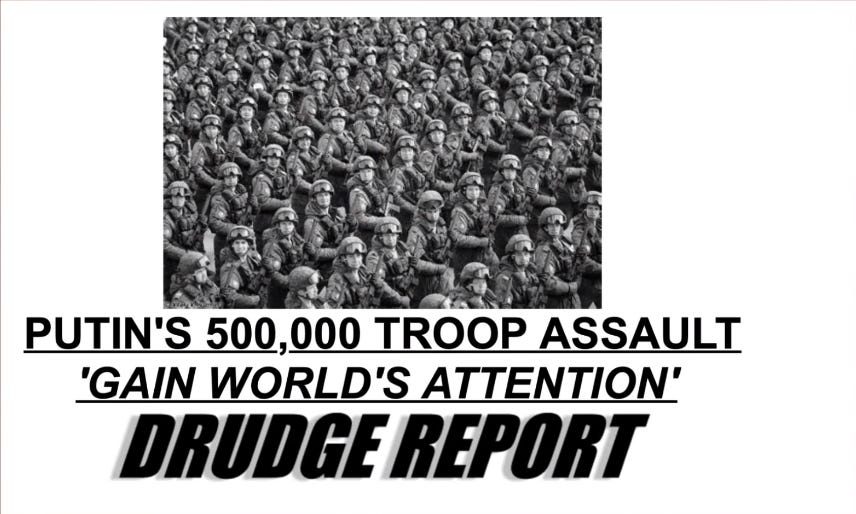
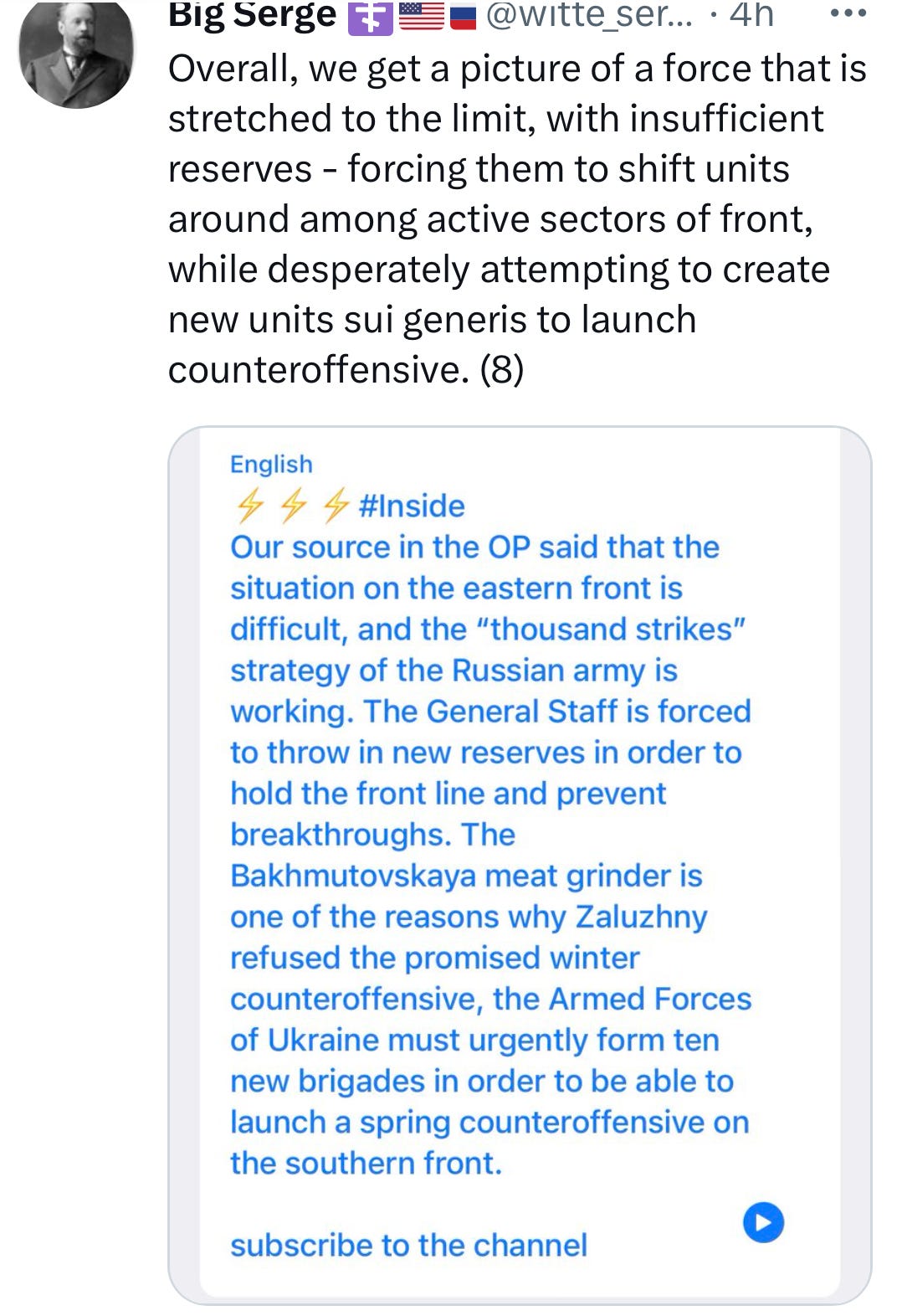
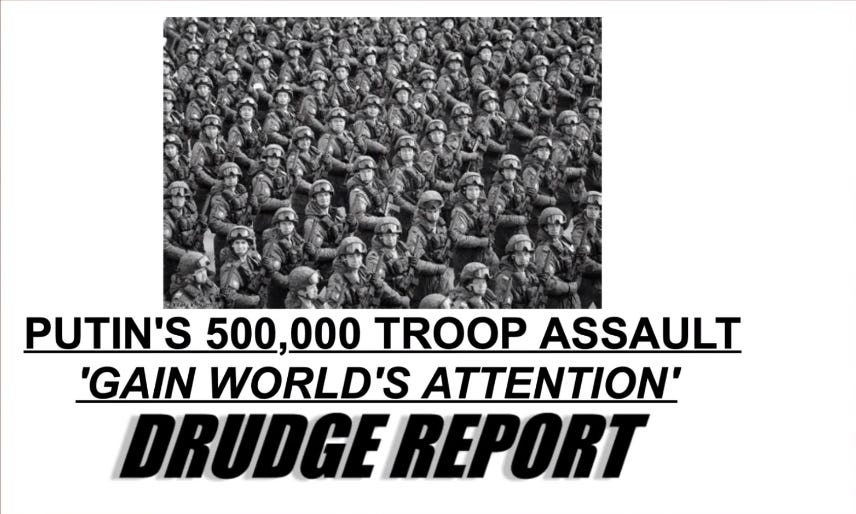

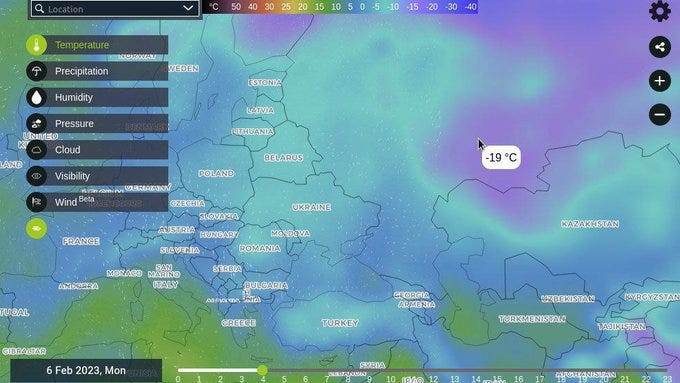
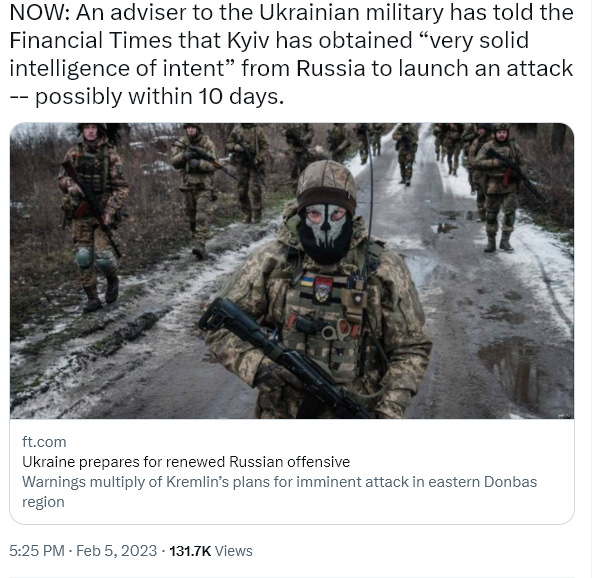
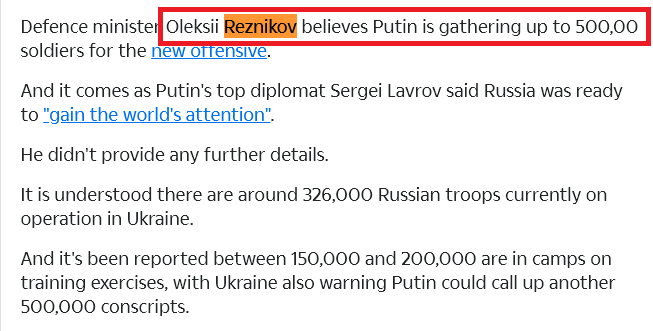
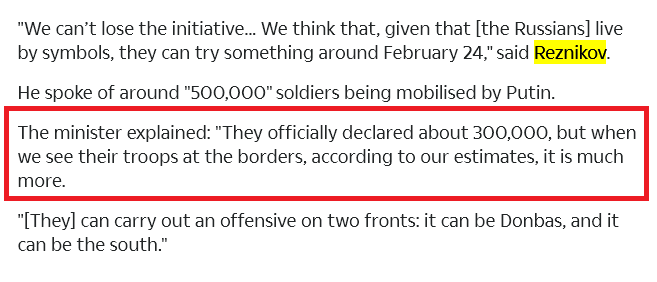
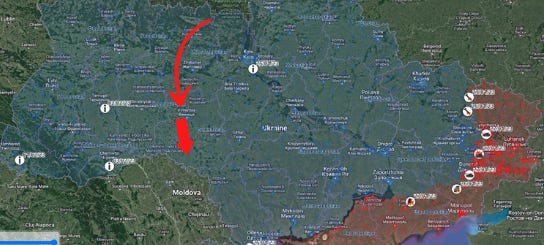
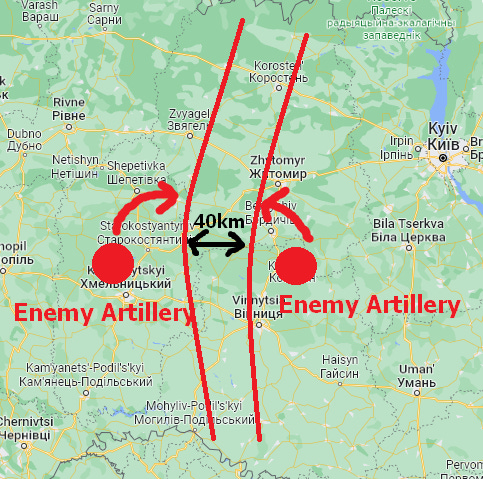
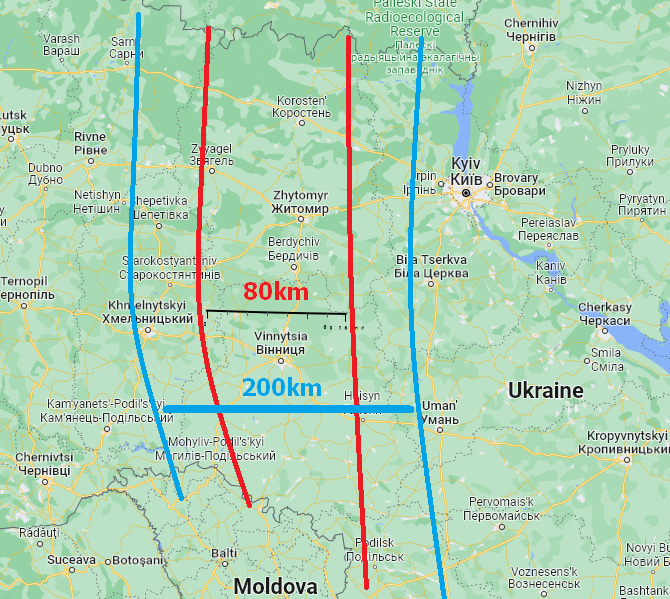
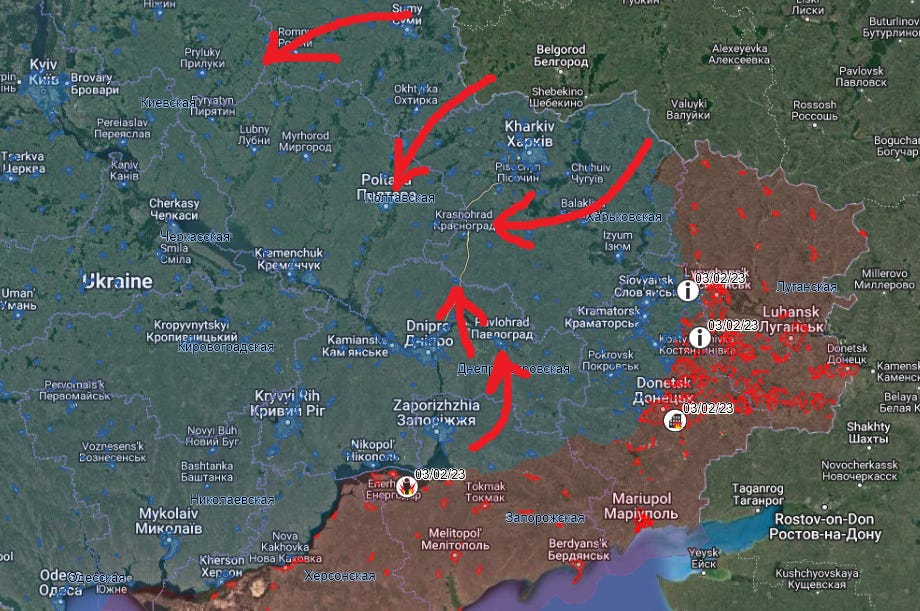
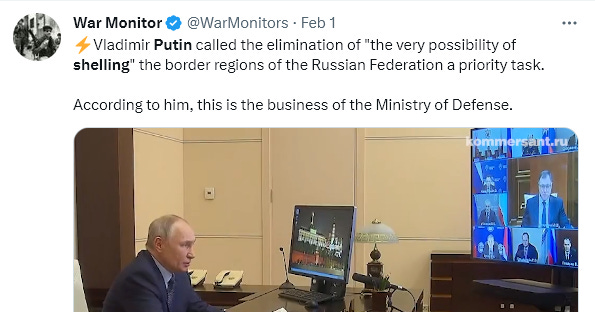

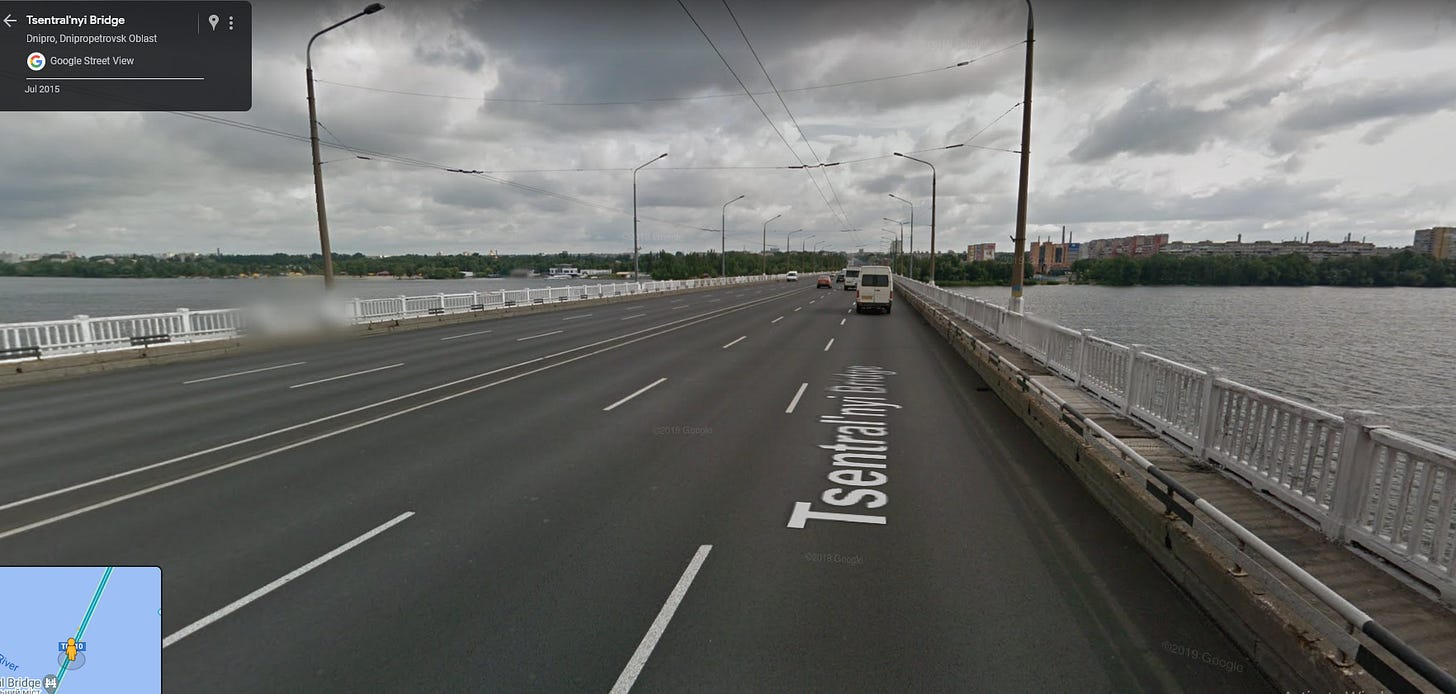
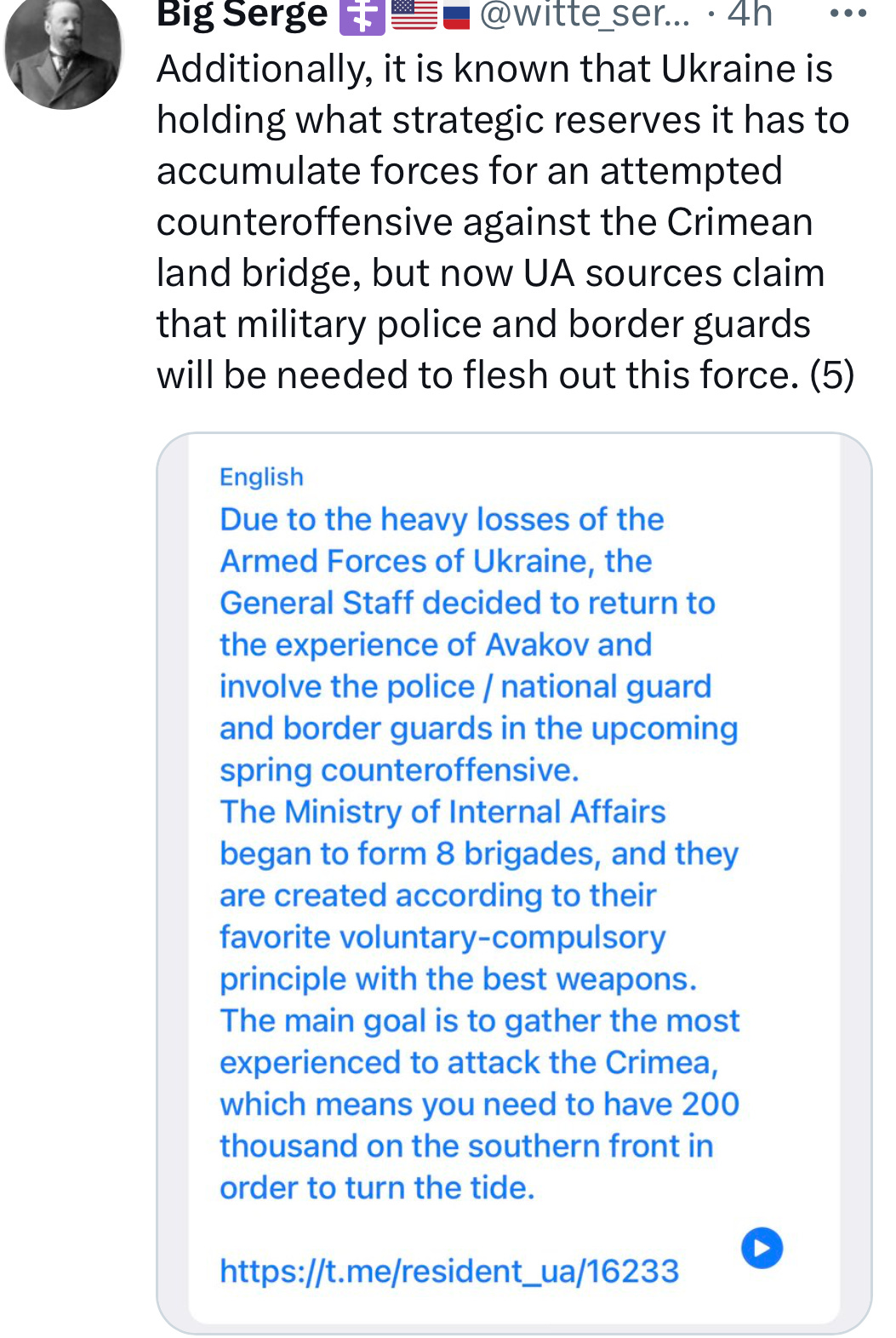
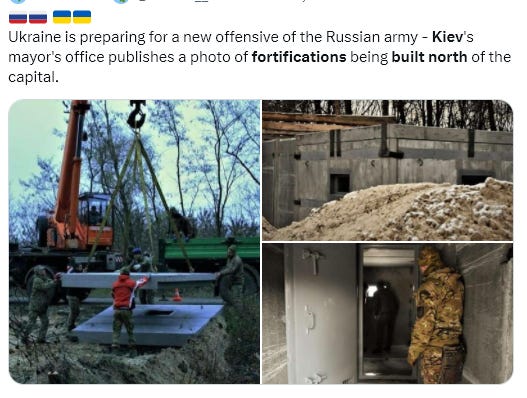
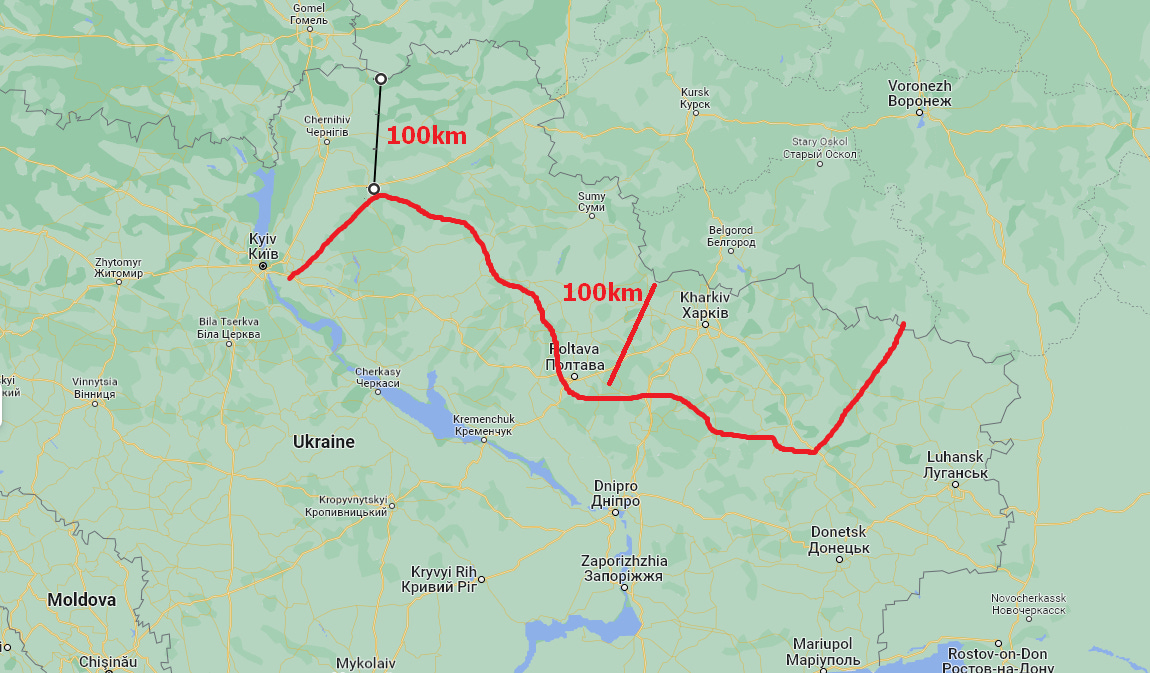
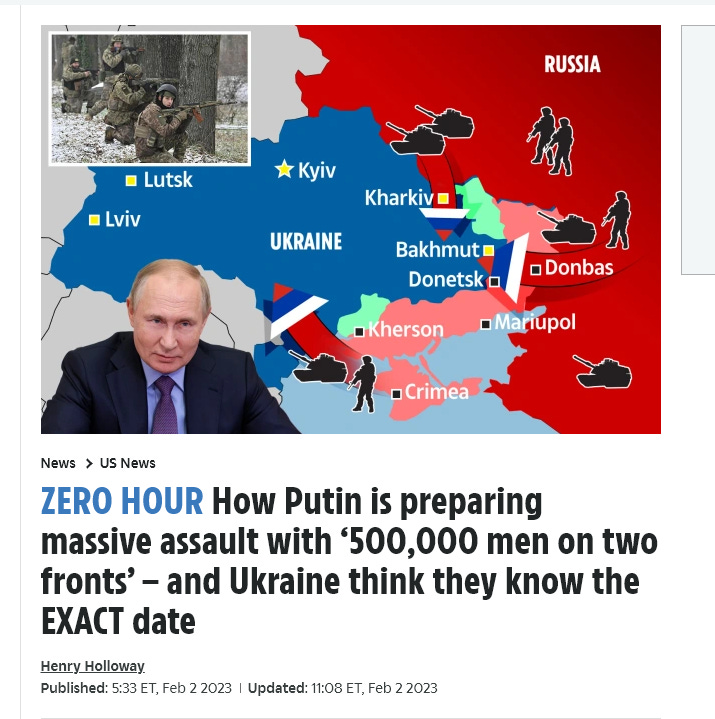
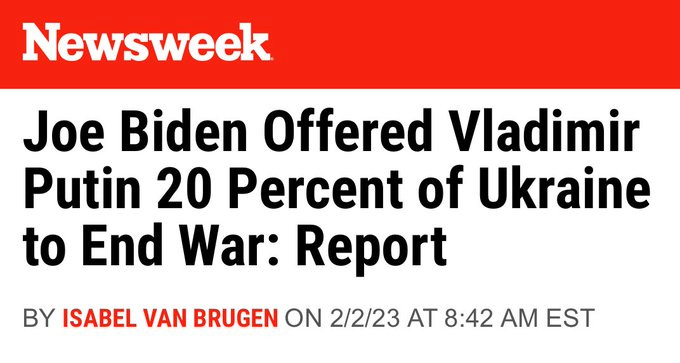
Hi, I see you found yourself a new hobby to keep you busy. ;-)
Here's my two cents. I seriously doubt that we will see a 'major' offensive anytime soon. I believe that Russia will continue with its strategy that has served it so well so far with regards to the demilitarisation of the Ukraine. This has been an artillery war, and I suspect that the Russians will do their best to keep it that way.
What they will do though is to intensify the conflict. You mentioned the 'death by a thousand cuts' approach. What has been happening so far could be characterised as 'death by a thousand PAPER cuts'. With the recent Russian attacks all along the frontline (except for Kherson), it is turning into 'death by a hundred knife cuts'. And it may well grow further in the near future, into 'death by a dozen sword cuts'. But I don't think we will see that single rapier thrust to the heart to finish it in one strike.
Recently Russia hasn't just been attacking in many different places, they've also halted or slowed down many of those attacks after a few days, and in some case, like Vuhledar, even pulled back again. I believe they do so because the objective of those attacks had been achieved. Those objectives were never geographical in nature though. They attacked locations that the Ukrainians 'must hold'. (Often a result of their own propaganda and the need to continue to appear 'victorious' enough to keep western aid coming in) to draw their reinforcements in.
The Ukraine lacks enough capable troops to hold the line everywhere, especially with the Bahkmut black hole having sucked in so many forces. Before the recent Russian attacks, the front along the Zaporozhe line was held almost exclusively by poorly trained, poorly equipped, poorly led, and poorly supplied territorial units who were also understrength. The few regular formations in the area were heavily depleted from fighting elsewhere, and send to the 'quiet' front to rest and recover.
But the Russian attacks changed that. Those weak territorial forces were relatively easily swept aside, and the Russians threatened to take locations the Ukrainians couldn't afford to lose. So what did they do? They send in reinforcements, regular formations with much better equipment and training. And I believe that that was the Russian objective all along. Their attacks are forcing the Ukrainians to commit their best brigades into the frontline, instead of keeping them back as mobile reserves. And by putting them in the frontline, they are now exactly where the Russians want them to be, within range of their artillery. I repeat, this is an artillery war, Russia is demilitarising the Ukraine by forcing them into a never-ending Verdun-like slaughter.
And it makes sense. We've all seen clip after clip of fresh and barely trained Ukrainian conscripts put in the frontline trenches doing little more than await death or injury from artillery, drone or missile strike. If, as the Ukrainian commander, you have the choice of putting your best troops, which are also your most mobile forces, in those trenches or your worst, if you're smart you'll pick the latter. They'll be blown up anyway, so you might as well sacrifice your lower quality troops and save the better ones.
And as long as the Russians kept back their ground attacks, or advanced only very slowly, the Ukrainians got away with it. But not any longer. Now Russia is forcing them to commit their better formations to the front. At Vuhledar itself there's now a mechanised brigade, and a tank brigade (in name at least) directly to the east of it, instead of a single understrength territorial brigade covering the whole area. And those two brigades are being whittled away by long range strike after long range strike. And it's happening along most of the front.
That's what the increased Russian manpower is allowing them to do. They are putting the Ukrainians in a catch-22 situation. If they keep the cheap cannon-fodder up front as they have been doing, they will lose vital ground (such as Vuhledar) all along the frontline, again and again. But if they commit their more capable formations to hold back the attacks, then the Russians will simply hang back and take their time to annihilate them with artillery. Earlier I said that as the Ukrainian high command was choosing to sacrifice low-grade troops rather than their best. Well, they no longer have that luxury. Russia is taking it away from them. And there's no way that the Ukrainians can keep regenerating units and manpower and acquire more weaponry fast enough to make up for those losses (of quality formations).
I believe that the Russians will continue with the strategy of demilitarising the Ukraine in the east of the country for a while yet. That's where the supply lines are the shortest for them and the longest for the Ukrainian forces. That's where Zelensky keeps pouring in troops, despite the advice of his generals, and that's where the Russian artillery already is. They will gradually intensify the pressure (from a hundred knife to a dozen sword cuts) and the amount of destruction that comes with it, but I don't really see the need for a fast and deep mobile advance anywhere.
As to that last remark, the point of a 'cauldron', or cutting of a large group of enemy forces, is to create battlefield circumstances that make it relatively easy for you to defeat that enemy force, by creating more and much larger difficulties for them than the pincer movement itself creates for you (the attacker). That's often overlooked, but those pincers to surround enemy forces have some serious risks and drawbacks for the attacker too, for one the losses they'll incur while attacking. Often those risks and drawbacks are worth it, but does that also apply to this conflict? As I pointed out above, the Ukrainians are already, and quite willingly, putting their troops where it is relatively easy for Russia to decimate them, with little risks and fairly low losses for themselves. So is there enough added benefit to create those cauldrons, with all the costs involved for the attacker, if the end result is going to be pretty much the same?
It is a valid question to ask if a 'big arrow' offensive aimed at encircling a large number of Ukrainian troops, with the costs and risks involved, is actually worth it, or if it is even a smart thing to do, given the specific circumstances of this conflict. Wouldn't it be better to finish of the Ukrainian armed forces east of the Dnjepr once and for all, rather than risk having them flee to the west of the river, and having to go and fight them there at a later stage?
At some point in the not so far away future the whole house of cards that is Ukraine will come crumbling down, militarily, politically and economically anyway. So why make it harder for yourself by forcing the Ukrainians west of the river BEFORE that societal collapse?
Excellent synopsis and research - could have used you in Nam. lol An old HS best friend now living in Florida emailed me and asked if he could help get me out of Crimea . Obviously, he was referring to the USG telling people to leave Russia. I first started working in Ukraine in 08 and retired here in 2012 but I like beaches so ...Crimea. Anyways, I told him - Thanks, but if the West Destroys Crimea - You can Kiss Florida - Dosvidonya. I haven't gotten a reply.